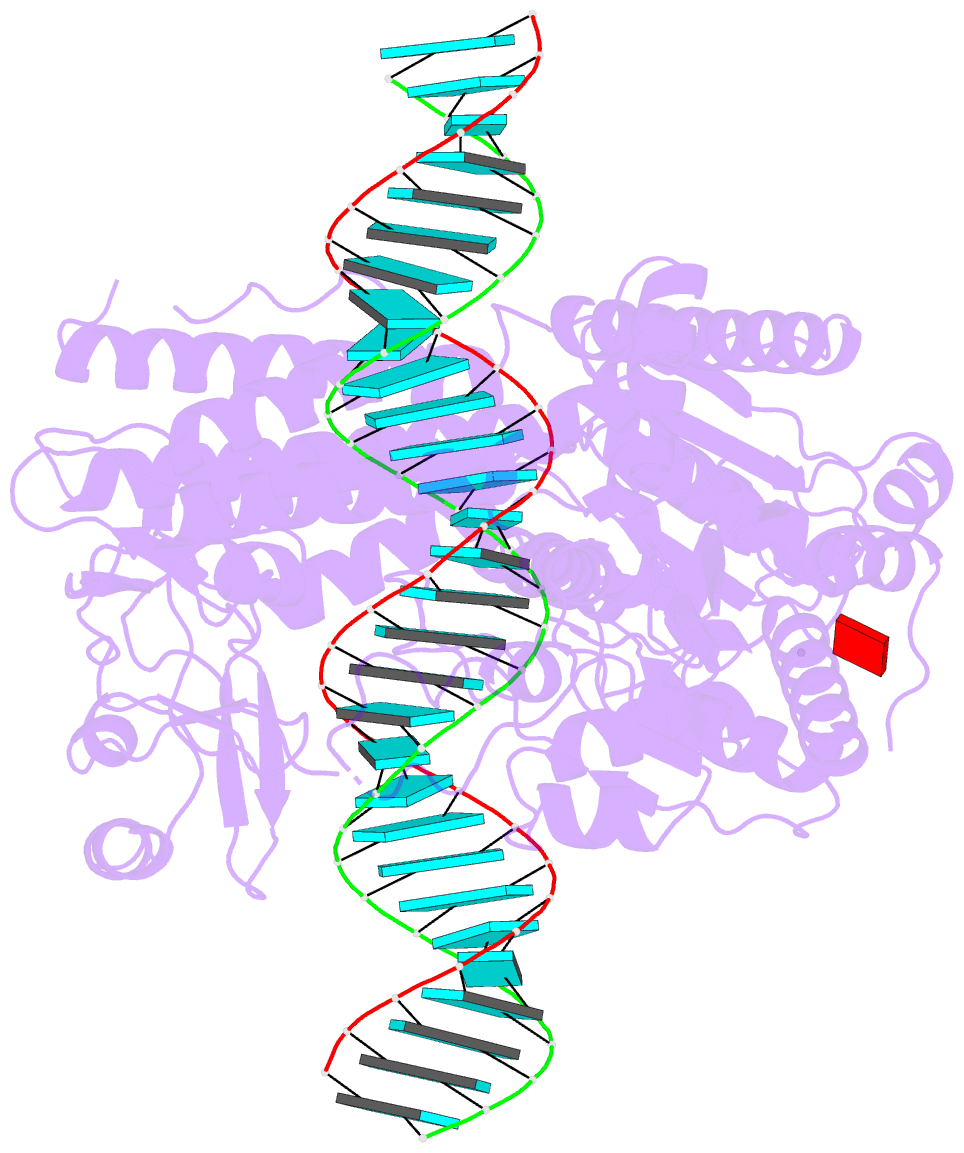Summary information and primary citation
- PDB-id
-
8t5s;
SNAP-derived features in text and
JSON formats
- Class
- antiviral protein-RNA
- Method
- cryo-EM (2.9 Å)
- Summary
- cryo-EM structure of drh-1 helicase and c-terminal
domain bound to dsrna
- Reference
-
Consalvo CD, Aderounmu AM, Donelick HM, Aruscavage PJ,
Eckert DM, Shen PS, Bass BL (2024): "Caenorhabditis
elegans Dicer acts with the RIG-I-like helicase DRH-1 and
RDE-4 to cleave dsRNA." Elife,
13. doi: 10.7554/eLife.93979.
- Abstract
- Invertebrates use the endoribonuclease Dicer to cleave
viral dsRNA during antiviral defense, while vertebrates use
RIG-I-like Receptors (RLRs), which bind viral dsRNA to
trigger an interferon response. While some invertebrate
Dicers act alone during antiviral defense,
<i>Caenorhabditis elegans</i> Dicer acts in a
complex with a dsRNA binding protein called RDE-4, and an
RLR ortholog called DRH-1. We used biochemical and
structural techniques to provide mechanistic insight into
how these proteins function together. We found RDE-4 is
important for ATP-independent and ATP-dependent cleavage
reactions, while helicase domains of both DCR-1 and DRH-1
contribute to ATP-dependent cleavage. DRH-1 plays the
dominant role in ATP hydrolysis, and like mammalian RLRs,
has an N-terminal domain that functions in autoinhibition.
A cryo-EM structure indicates DRH-1 interacts with DCR-1's
helicase domain, suggesting this interaction relieves
autoinhibition. Our study unravels the mechanistic basis of
the collaboration between two helicases from typically
distinct innate immune defense pathways.





